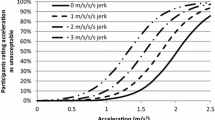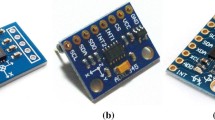Abstract
A conventional French railway track was instrumented with accelerometers and geophones at three depths: sleeper (surface), interlayer (ITL, z=−0.93 m), and transition layer (TL, z=−1.20 m). A linear variable differential transformer (LVDT) was also used to monitor the displacement at the sleeper level. The recorded data allow the integration method (double for accelerometer and simple for geophone) for displacement determination to be assessed. Several questions need to be addressed prior to the selection of an adequate monitoring system: definition of signal filtering processes, influence on results of the different loading wavelengths, repeatability of measurements, train speed and axle load impact and their ranges of validity for each sensor. It was found that the main frequencies that caused more than 95% of the displacement of the monitored materials are in the low frequency range: <25 Hz for trains running up to 200 km/h. For an intercity train, the low frequencies are normally excited by long wavelengths, for instance, those corresponding to the 1/2 coach distance (λ=13.20 m), the bogies distance (λ=6.3 m), and the axle distance (λ=2.8 m). Comparison between the displacements deduced from the records of accelerometer and geophone and obtained from the records of LVDT shows quite consistent results; the mean displacement amplitudes obtained from accelerometers differ by only 20% from the LVDT records. The train speed does not have a strong effect on the obtained differences between sensors. The embedded sensors also gave consistent displacement results for each analysed depth. Moreover, the displacement amplitudes caused by different axle loads (locomotive or passenger coach) are distinguishable for all sensors at all depths. This validates the integration method used for the displacement determination.
目的
本文旨在研究不同波长载荷(包括车厢长度、构架长度以及轴距等)对位移确定的影响,利用积分方法确定位移的有效性和重复性的适用范围,以及研究列车速度和轴荷载对变形量的影响,为轨道基础位移监测提供重要的方法。
创新点
1. 评价和分析一种积分方法,该方法利用低通滤波法但不消除产生变形的主要频率;2. 通过对位移、速度和加速度传感器在时域和频域结果的比较,使重复性得到保证。
方法
利用线性可变差位移传感器、地震检波器以及加速度计获取轨道不同深度的位移、速度和加速度,然后利用巴特沃兹低通滤波器对3类数据进行滤波。通过对速度一阶积分、加速度二阶积分,获得由3 种传感器测试得到的位移并 验证其准确性。
结论
通过测试和分析发现,95%的位移幅值来自于 波长大于轴距(2.8m)的激励,对应的低频为25Hz(列车运行速度为200km/h)。通过线性可 变差位移传感器、地震检波器以及加速度计直接获得或间接积分获得的位移十分接近,验证了积分方法的有效性,且其具有较高的可重复性。
Similar content being viewed by others
References
Auersch, L., 1994. Wave propagation in layered soils: theoretical solution in wavenumber domain and experimental results of hammer and railway traffic excitation. Journal of Sound and Vibration, 173(2):233–264. http://dx.doi.org/10.1006/jsvi.1994.1228
Boore, D.M., 2001. Effect of baseline corrections on displacements and response spectra for several recordings of the 1999 Chi-Chi, Taiwan, Earthquake. Bulletin of the Seismological Society of America, 91(5): 1199–1211.
Boore, D.M., 2003. Analog-to-digital conversion as a source of drifts in displacements derived from digital recordings of ground acceleration. Bulletin of the Seismological Society of America, 93(5):2017–2024. http://dx.doi.org/10.1785/0120020239
Boore, D.M., Bommer, J.J., 2005. Processing of strongmotion accelerograms: needs, options and consequences. Soil Dynamics and Earthquake Engineering, 25(2):93–115. http://dx.doi.org/10.1016/j.soildyn.2004.10.007
Boore, D.M., Stephens, C.D., Joyner, W.B., 2002. Comments on baseline correction of digital strong-motion data: examples from the 1999 Hector Mine, California, Earthquake. Bulletin of the Seismological Society of America, 92(4):1543–1560. http://dx.doi.org/10.1785/0120000926
Bowness, D., Lock, A.C., Powrie, W., et al., 2007. Monitoring the dynamic displacements of railway track. Proceedings of the Institution of Mechanical Engineers, Part F: Journal of Rail and Rapid Transit, 221(1):13–22. http://dx.doi.org/10.1243/0954409JRRT51
Connolly, D.P., Kouroussis, G., Fan, W.Z., et al., 2013. An experimental analysis of embankment vibrations due to high speed rail. Proceedings of the 12th International Railway Engineering Conference (Railway Engineering).
Connolly, D.P., Kouroussis, G., Woodward, P.K., et al., 2014. Field testing and analysis of high speed rail vibrations. Soil Dynamics and Earthquake Engineering, 67:102–118. http://dx.doi.org/10.1016/j.soildyn.2014.08.013
Connolly, D.P., Costa, P.A., Kouroussis, G., et al., 2015. Large scale international testing of railway ground vibrations across europe. Soil Dynamics and Earthquake Engineering, 71:1–12. http://dx.doi.org/10.1016/j.soildyn.2015.01.001
Costa, P.A., Calcada, R., Cardoso, A.S., 2012. Track–ground vibrations induced by railway traffic: in-situ measurements and validation of a 2.5D FEM-BEM model. Soil Dynamics and Earthquake Engineering, 32(1):111–128. http://dx.doi.org/10.1016/j.soildyn.2011.09.002
Cui, Y.J., Lamas-Lopez, F., Trinh, V.N., et al., 2014. Investigation of interlayer soil behaviour by field monitoring. Transportation Geotechnics, 1(3):91–105. http://dx.doi.org/10.1016/j.trgeo.2014.04.002
Degrande, G., Schillemans, L., 2001. Free field vibrations during the passage of a Thalys high-speed train at variable speed. Journal of Sound and Vibration, 247(1): 131–144. http://dx.doi.org/10.1006/jsvi.2001.3718
Ferreira, P.A., López-Pita, A., 2015. Numerical modelling of high speed train/track system for the reduction of vibration levels and maintenance needs of railway tracks. Construction and Building Materials, 79:14–21. http://dx.doi.org/10.1016/j.conbuildmat.2014.12.124
Fröhling, R.D., 1997. Deterioration of Railway Track Due to Dynamic Vehicle Loading and Spatially Varying Track Stiffness. PhD Thesis, University of Pretoria, South Africa.
Galvín, P., Domínguez, J., 2007. Analysis of ground motion due to moving surface loads induced by high-speed trains. Engineering Analysis with Boundary Elements, 31(11):931–941. http://dx.doi.org/10.1016/j.enganabound.2007.03.003
Galvín, P., Domínguez, J., 2009. Experimental and numerical analyses of vibrations induced by high-speed trains on the Córdoba–Málaga line. Soil Dynamics and Earthquake Engineering, 29(4):641–657. http://dx.doi.org/10.1016/j.soildyn.2008.07.001
Graizer, V.M., 2010. Strong motion recordings and residual displacements: what are we actually recording in strong motion seismology? Seismological Research Letters, 81(4):635–639. http://dx.doi.org/10.1785/gssrl.81.4.635
Hall, L., 2003. Simulations and analyses of train-induced ground vibrations in finite element models. Soil Dynamics and Earthquake Engineering, 23(5):403–413. http://dx.doi.org/10.1016/S0267-7261(02)00209-9
Hendry, M.T., Barbour, L., Hughes, D.A., 2010. Track displacement and energy loss in a railway embankment. Proceedings of the Institution of Civil Engineers-Geotechnical Engineering, 163(1):3–12. http://dx.doi.org/10.1680/geng.2010.163.1.3
Hendry, M.T., Martin, C.D., Barbour, S.L., 2013. Measurement of cyclic response of railway embankments and underlying soft peat foundations to heavy axle loads. Canadian Geotechnical Journal, 50(5):467–480.
Kornylo, J., Jain, V., 1974. Two-pass recursive filter with zero phase shift. IEEE Transactions on Acoustics Speech and Signal Processing, 22(5):384–387. http://dx.doi.org/10.1109/TASSP.1974.1162602
Kouroussis, G., Connolly, D.P., Verlinden, O., 2014. Railway-induced ground vibrations–a review of vehicle effects. International Journal of Rail Transportation, 2(2):69–110. http://dx.doi.org/10.1080/23248378.2014.897791
Kouroussis, G., Caucheteur, C., Kinet, D., et al., 2015. Review of trackside monitoring solutions: from strain gages to optical fibre sensors. Sensors, 15(8):20115–20139. http://dx.doi.org/10.3390/s150820115
Kyoya, N., Arakawa, K., 2009. A method for impact noise reduction from speech using a stationary-nonstationary separating filter. International Symposium on Communications and Information, p.33–37.
Lamas-Lopez, F., Cui, Y.J., Calon, N., et al., 2016a. Geotechnical auscultation of a French conventional railway track-bed for maintenance purposes. Soils and Foundations, 56(2):240–250. http://dx.doi.org/10.1016/j.sandf.2016.02.007
Lamas-Lopez, F., Cui, Y.J., Calon, N., et al., 2016b. Trackbed mechanical behaviour under the impact of train at different speeds. Soils and Foundations, 56(4):627–639. http://dx.doi.org/10.1016/j.sandf.2016.07.004
Le Pen, L., Watson, G., Powrie, W., et al., 2014. The behaviour of railway level crossings: insights through field monitoring. Transportation Geotechnics, 1(4):201–213. http://dx.doi.org/10.1016/j.trgeo.2014.05.002
Madshus, C., Kaynia, A.M., 2000. High-speed railway lines on soft ground: dynamic behaviour at critical train speed. Journal of Sound and Vibration, 231(3):689–701. http://dx.doi.org/10.1006/jsvi.1999.2647
Mishra, D., Tutumluer, E., Boler, H., et al., 2014. Instrumentation and performance monitoring of railroad track transitions using multidepth deflectometers and strain gauges. 93rd Annual Meeting of the Transportation Research Board.
Müller-Boruttau, F.H., Breitsamer, N., 2004. Elastic Elements Reduce the Loads Exerted on the Permanent Way. Technical Note, Beratende Ingenieure BYIK, Germany.
Priest, J.A., Powrie, W., 2009. Determination of dynamic track modulus from measurement of track velocity during train passage. Journal of Geotechnical and Geoenvironmental Engineering, 135(11):1732–1740. http://dx.doi.org/10.1061/(ASCE)GT.1943-5606.0000130
Priest, J.A., Powrie, W., Grabe, P.J., et al., 2010. Measurements of transient ground movements below a ballasted railway line. Géotechnique, 60(9):667–677. http://dx.doi.org/10.1680/geot.7.00172
Stiros, S.C., 2008. Errors in velocities and displacements deduced from accelero-graphs: an approach based on the theory of error propagation. Soil Dynamics and Earthquake Engineering, 28(5):415–420. http://dx.doi.org/10.1016/j.soildyn.2007.07.004
Thong, Y.K., Woolfson, M.S., Crowe, J.A., et al., 2002. Dependence of inertial measurements of distance on accelerometer noise. Measurement Science and Technology, 13(8):1163–1172. http://dx.doi.org/10.1088/0957-0233/13/8/301
Trifunac, M.D., 1971. Zero baseline correction of strongmotion accelerograms. Bulletin of the Seismological Society of America, 61(5):1201–1211.
Yang, J., Li, J.B., Lin, G., 2006. A simple approach to integration of acceleration data for dynamic soil–structure interaction analysis. Soil Dynamics and Earthquake Engineering, 26(8):725–734. http://dx.doi.org/10.1016/j.soildyn.2005.12.011
Zuada-Coelho, B.E., 2011. Dynamics of Railway Transition Zones in Soft Soils. MS Thesis, University of Porto, Portugal.
Acknowledgments
The authors are grateful to Benjamin L’HÉNORET and Jean-Michel PISSOT for their technical advice. The authors would also like to thank the track maintenance SNCFRESEAU brigade at Vierzon, especially to their planning coordinator Ludovic GAVEAU, without whom this monitoring zone would not be accomplished.
Author information
Authors and Affiliations
Corresponding author
Additional information
Project supported by the Influence de la Vitesse sur le Comportement de la Structure de Assise (INVICSA) Research Project Funded by SNCF-RESEAU and the Association Nationale de Recherche et Technologie (ANRT) with a Convention Industrielle pour la Formation dans la Recherché (CIFRE) (No. 2012/1150)
ORCID: F. LAMAS-LOPEZ, http://orcid.org/0000-0002-9434-1484
Rights and permissions
About this article
Cite this article
Lamas-Lopez, F., Cui, Y.J., D’Aguiar, S.C. et al. Assessment of integration method for displacement determination using field accelerometer and geophone data. J. Zhejiang Univ. Sci. A 18, 553–566 (2017). https://doi.org/10.1631/jzus.A1600212
Received:
Accepted:
Published:
Issue Date:
DOI: https://doi.org/10.1631/jzus.A1600212
Keywords
- Railway track
- Vibrations
- Accelerometer
- Geophone
- Linear variable differential transformer (LVDT)
- Integration method
- Deflection amplitude estimation
- Measurement repeatability




